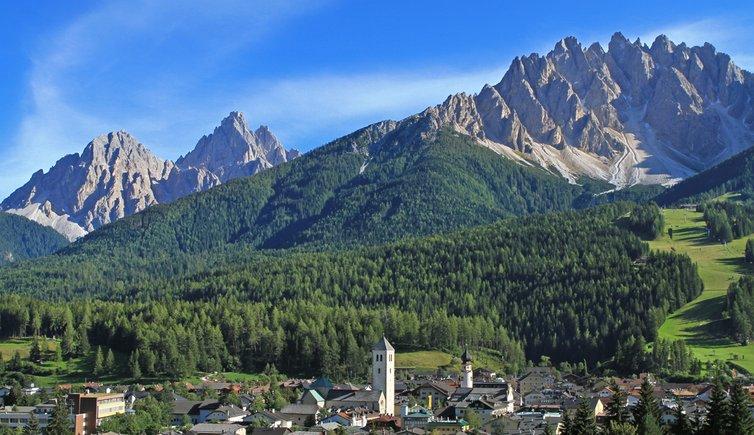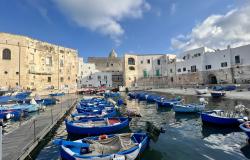With the arrival of warmer and sunnier days, we’re all inclined to spend more time outside, enjoying nature. Here’s why we have picked three destinations that invite being active outdoors, and are perfect for Spring time.
Val Pusteria – South Tyrol

Alpine meadows, forests and woods, sun-drenched high plateaus, and the impressive Tre Cime di Lavaredo (Three Peaks) make the Pusteria Valley in South Tyrol a paradise for hikers, mountain bikers, climbers and all those who love nature.
The green valley in the heart of the Dolomites extends from Chiusa di Rio Pusteria to Lienz in the Eastern Tyrol of Austria.
Several parks within the valley were established to provide protection for these natural areas, including Sesto Dolomites, Fanes-Sennes-Braies, Vedrette di Ries, Puez-Odle. One of the main attractions here is the Braies Lake (Lago di Braies), considered one of the most beautiful mountain lakes of South Tyrol. In the same area is Prato Piazza, a high-altitude terrace located at 2,000 meters, a very popular excursion destination in the Valle di Braies. Here, less experienced hikers can enjoy easy walks and promenades, while taking in the refreshing mountain air.
Other points of interest in the Val Pusteria include Brunico, considered the heart of the valley, a great destination for those who love an active vacation, with the Plan de Corones mountain and holiday area at 2,277 meters (remember this name if you’re going in the winter – outstanding ski area!); Dobbiaco, which borders two natural parks, the Sesto Dolomites and the Fanes-Sennes-Braies, and is considered the gateway to the Dolomites; here the composer Gustav Mahler spent his summer holidays at the beginning of the 20th century and today there is a summer festival in his name; family friendly destinations here include the Lago di Dobbiaco and Lago di Landro; and San Candido, which is surrounded by the impressive Baranci mountain range, which frame the village, for an amazing view while strolling in the pedestrian zone. San Candido is also famous for being the location of a very popular Italian TV show, Un passo dal cielo, starring Terence Hill.
Finally, hiking around the Three Peaks of Lavaredo is a must!
For more information about the Val Pusteria, click here.
Parco Naturale della Maremma e Monti dell’Uccellina – Tuscany

Parco dell'Uccellina, or Maremma Regional Park, is a 10,000-hectare natural reserve overlooking the Tyrrhenian Sea, in Tuscany. It stretches for 25 km along a pristine coastal area in the southern part of the region, from the Ombrone river estuary to the little port town of Talamone, and comprises a range of hills that descend towards the sea, sandy beaches and high cliffs, surrounded by marshland, pine forests, fields and pastures. It is the perfect choice for those who want an experience that is both relaxing and rejuvenating, in close contact with nature.
Experience the local flora and fauna, beginning with the Mediterranean scrub, formed by maritime and domestic pines, oaks, cork trees, laurel, myrtle and juniper shrubs. The park is home to many animals, including wild boar, deer, red foxes, porcupines, turtles, and many species of rare Italian birds. In the flat areas of the Uccellina Hills and on the plains near the sea, Maremma cattle is bred free. Maremma horses, which belong to the same group as the Berber horses that the Romans had imported from Numidia (present-day Algeria), are also bred free; they are hardy working horses used for livestock management. Hopefully, you’ll be able to catch a glimpse of the local cattle rangers, known as butteri, the Italian cowboys of the Maremma.
For more information about Maremma Regional Park, click here.
Parco Nazionale d’Abruzzo - Abruzzo and part of Lazio and Molise

Parco Nazionale d'Abruzzo, Lazio e Molise, better known as Abruzzo National Park, is a national park extending for almost 500,000 square kilometers in the heart of the central Apennines, founded in 1922. Today, the area is 100 times larger than the original reserve. Most of the park is located in the central region of Abruzzo, with areas stretching into Lazio and Molise, hence its name.
It is the oldest park in the Apennines and has played an important role in the preservation of species such as the Italian wolf, the Abruzzo chamois and the Marsican brown bear. The Marsican brown bear is the symbol of the park, endemic to Central Italy. It is estimated that a population of about 40 bears is living within the park boundaries.
The park is around two thirds beech forest; other trees include the silver birch, and the black and mountain pines. Many birds of prey inhabit the park, most notable among them the golden eagle, which can often be seen soaring over the park.
Within the park are 24 quaint villages; make sure you explore some of them, including Pescasseroli, Civitella Alfedena, and Villavallelonga.
Spring is really a great time to visit the park, when meadows are covered with flowering violets, crocuses, snowbells, gentians, lilies, primroses and buttercups, animals, including deer, chamois, bears, foxes, hares and otters, resume activity after the winter hibernation, and the migratory birds animate the sky once again.
Many outdoor activities are possible within the park including hiking, horse riding, cycling, canoeing and bird watching. There are many options for hiking paths, from easy to difficult, short to long. Some of the most popular are the Pista dell’orso (Bear Path), and the Percorso sulle tracce degli animali misteriosi (Trail of Mysterious Animals).
Most of the roads in the park are closed to vehicle traffic. Cars may only be used to get to the park and to travel between towns.
For more information about Abruzzo National Park, click here.









